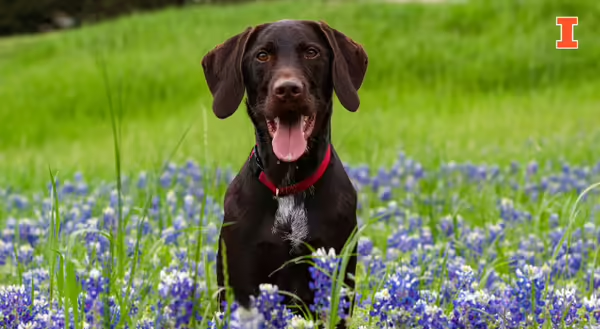
If you have pets, chances are they spend time with you outside. If you have a yard for them to play in and explore, you’ve likely caught your pet chomping a plant, sniffing a flower, or chasing a critter. But have you stopped to think about whether something in your yard could make your pet sick? How can you have an attractive yard that is also safe for your animal companions?
Safe Lawns
Typical lawns can be made of one of a few different species of grass or a combination of several species. Some grasses are more susceptible to urine than others. If you’re planting a new lawn and you have a dog (especially a female dog), look for tall fescue or perennial ryegrass for your lawn. These species are less affected by the ammonia in urine than Kentucky bluegrass. If you’re already dealing with dead spots in your grass, consider watering the spot after your dog urinates. This can dilute the ammonia and negate the effects on your grass.
Fertilizers and pesticides can sometimes cause problems for pets, so read the label and understand the safety precautions of anything you choose to apply. Some products may require a waiting period before allowing pets (or humans!) to walk through the treated area. You can also naturally improve the health of your lawn by aerating the soil, not cutting too short (2.5-3” is optimal to help prevent weeds) and never removing more than a third of the leaf blade in any one cut. This can help limit the amount of chemicals needed to maintain a healthy lawn.
Plants and Other Elements
Make sure to provide shade areas for your pet using hardscape elements or trees. A clean water source is also a necessity for drinking or playing in. When adding mulch, choose untreated, undyed mulch, as colorants can contain harmful chemicals. Avoid cocoa mulch as it contains theobromine, the chemical that makes chocolate bad for dogs.
Plant choice is also important. Whether or not your pet is known to give plants a curious nibble, avoid planting toxic species where they can access them. Plants to avoid include members of the allium family (onions, garlic, and ornamental varieties), foxgloves, elderberry, castor beans, crocus, lily of the valley, milkweeds, and many others. While some may just cause some mild tummy upset, others can have much more serious consequences. Non-toxic choices include pansies, celosia, cleome, petunias, purple coneflower, heuchera, and rose mallow. Perhaps you want to plant things intentionally for your pet to munch? Safe choices for snacking can include peas/beans, carrots (including the tops!), zucchini, berries, and herbs like rosemary, basil, and thyme. Always research any new plants you’re considering before purchasing.
For more information, check out Rhonda Ferree’s Pet-scaping your yard or Bruce Black’s Plants and Pet Safety. Also, check out the University of Illinois Extension Horticulture YouTube Channel for videos on other horticulture topics.
About the author: Jamie Viebach is the University of Illinois Extension Horticulture Educator serving DuPage, Kane, and Kendall counties. Viebach’s primary areas of expertise are native plants, landscaping, pollinators, and rain gardens.